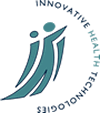IHT at the HTAi in Rome: A Report
How can it be that a health technology can be regarded as being valuable and useless at the same time? How do health innovations become valued and how is this anchored in evidence? And how does the local perspective of different users redefine the relative utility of a technology?
These were some of the questions that were addressed when the IHT Programme, as part of the ESRC's Social Science Week, organised an international meeting to open dialogue with delegates to the Health Technology Assessment International Conference in Rome, June 20-22. The purpose of the Workshop was to bring together researchers from the UK's Innovative Health Technologies Programme with those working in HTA to see whether lessons can be drawn from the programme that could be of value to the both communities. The first day of the meeting was devoted to an international comparison of health technologies, while the second looked more to specific debates over their evaluation.
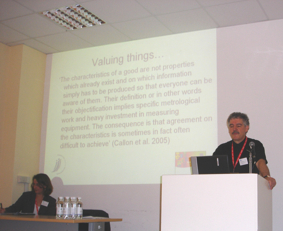
The IHT Programme Director, Andrew Webster, opened the Workshop by discussing the relationship between evidence, the perceived value and quality of health technologies and the diverse forms of 'evaluation' that are made of them. Technologies have different user affordances that are more or less codified and codifiable and this leads to instability in regard to both their design and context of use. In turn this will affect how criteria such as efficacy, efficiency and benefit are deployed by clinicians and regulators, and how patients respond to treatments and interventions.
The various papers from the meeting (included here as powerpoint presentations) explored a wide range of issues from the dynamics of health innovation systems, regenerative medicine, internet pharmacy, biobanks, drug regulation, attitudes to prenatal testing, genomics, prenatal testing, telemedicine, cancer genetics, tissue engineering, cancer and pain relief, and prenatal screening. The range of subjects here is an excellent, though only part reflection, of the excellent work produced within the Programme. It is not intended here to go over each paper in detail, but rather to pick out some of the generic themes that they raised, in part through reference to the two plenary papers that opened each day.
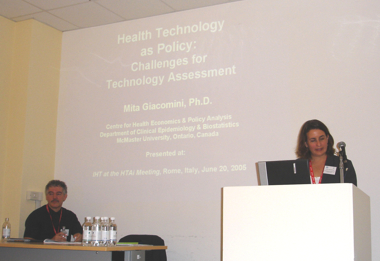
Many of the themes were fore-grounded in Mita Giacomini's excellent opening address to the meeting, 'Health Technology as Policy: Challenges for Technology Assessment'. She argued that of the 500 HTA Reports produced annually, 93% of them start with the technology, while only 7% ask what might be the problem being addressed and the degree to which the technology of interest is appropriate. She suggested that many IHTs blur medical, social and personal aims and needs and that there is a need to build some 'intelligent theorising' to help clinical epidemiologists to see how new technologies might be more workable. Otherwise policy makers simply help to reproduce a 'technocratic fantasy' that presumes clearly defined technical fixes for complex problems. She drew on her recent experience in Canada in arguing that:
'The expanded purview of health technology policy analysis creates opportunities for health technology scholars in the social sciences and humanities to play a larger role in health technology policy. In particular, work is needed: to characterize and evaluate the full impacts of individual technologies, to construct fuller evaluation criteria and standards for all technologies, to conjure possible impacts that cannot be easily predicted or measured, and to develop more nuanced means of technology governance than blunt funding decisions offer.'
However, she challenged the social science delegates to go beyond the argument that says 'things' are more complex and confusing, contingent and unstable.
And indeed, subsequent papers (as captured in the attached slides) rose to the challenge and identified through clear and careful evidence how we might make for more nuanced approaches to the evaluation of health technologies.
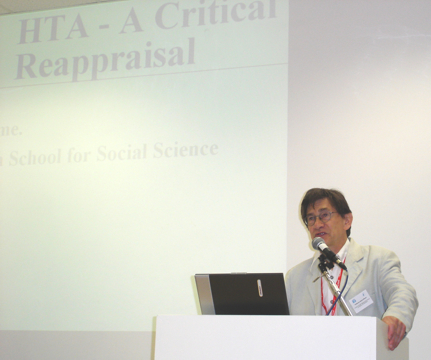
Stuart Blume, who opened the second day of the meeting, discussed some key aspects of the development of HTA which in many ways has limited what it might have been able to do. Because the field took shape in a specific political context this limited what it could do, and in many ways, data used by the HTA world reflected the interests of the more powerful actors within government and health delivery: certain variables were deemed relevant others not so, and much of the latter relates to context of use. However, this move to strip context out from the 'evidence' is complicated by a growing relevance of patient and health care 'consumers', such that there is a conflict between the rhetorics of evidence-based medicine and an accommodation of patient hopes and expectations. He argued for new dialogue between HTA and social science (and especially science and technology studies) that might, in its outcome, weaken the modernist resolve of 'generalisability', but in contrast helpfully strengthen the sense in which health evaluations are more 'socially robust'.
The broad themes that were captured in the closing day were as follows:
• Evaluation is a contested terrain involving three forms of evidence: experimental (as in RCTs), evidential, and experiential. These three need to be brought together in new algorithms
• That, as a result, trials and other conventional HTA techniques grounded in an impact perspective cannot hope to emulate real life and social practice: there is a need to move from an emphasis on outcomes to one on process and outputs, while the aggregative knowledge of HTA needs to be complemented by the qualitative knowledge of prospective users of IHTs
• Methodologically, social science's contribution should not merely be seen to the qualitative but also offering quantitative analyses of health technology evaluation: we need to challenge and check the emerging dichotomy between the HTA world of quantitative generalisation and the qualitative textual, case study work of social science. Contextualisation is a help not hindrance to generalisability. Even so, one delegate observed that the qualitative dimension is especially important for it challenges - like the proverbial 'black swan' - the preconceptions upon which quantitative approaches and measures depend.
• Key audiences for evaluation beyond the clinical community that need much greater attention and support are patients, firms and social care agencies, especially the latter who must try to make new devices and systems work on the ground. Key questions of equity come to the fore here and much more needs to be done on this question - as Mira Johri's paper argues.
• Policy and regulatory agencies have an important influence on new technologies and can in their classification of them according to regulatory requirements reposition them and change their status and identity in the health system, as we have seen with respect to tissue engineered products; this needs to be attended to by HTA practitioners for it will affect how these technologies should be evaluated.
• The IHT/HTA links should focus future dialogue on what we can learn about existing technologies and their use before they become obsolete (and indeed why such obsolescence occurs); in addition we should try to teach policy-makers what to worry about, what disruptive technologies may be appearing and why and how they should be managed. As our closing speaker, Professor Jack Dowie said, we should be asking what do we want to do rather than what do we want to know?
The IHT Conference closed with many HTA delegates asking to receive copies
of papers and this overview report. It is to be seen whether the links built
over two days in Rome will all prevail, but certainly the meeting established
some important areas for future dialogue. This report will be circulated
to the organisers of the HTAi and any future developments will appear on
the IHT web site.
Finally, you cant visit the 'Eternal City' without seeing some of the sights....
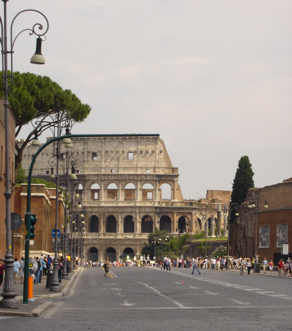
It'll look fantastic when they finish it.
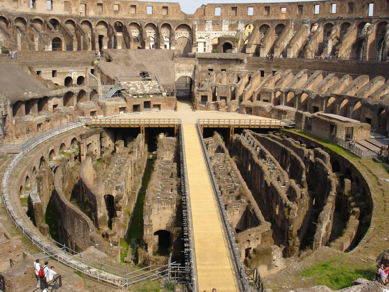
The Romans love their maze-like buildings....

.....lots of steps....

...and columns...

....and elaborate water features!
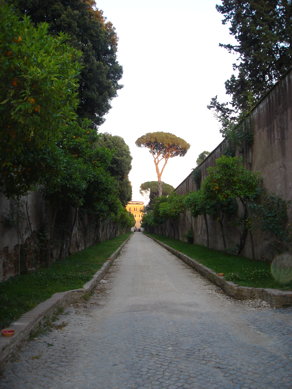
It was a long walk to the gala dinner....

..... though transport was provided.

But it was worth it once we got there.
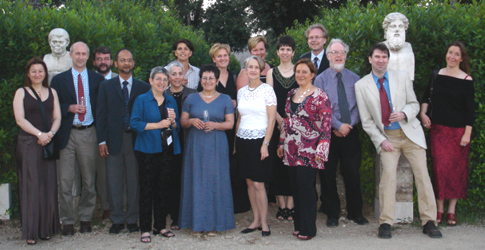
The speakers and delegates enjoyed it - and we were even joined by a couple of the locals!
Professor Andrew Webster - IHT Programme Director
Stephanie Hazel-Gant - IHT Programme Administrator
